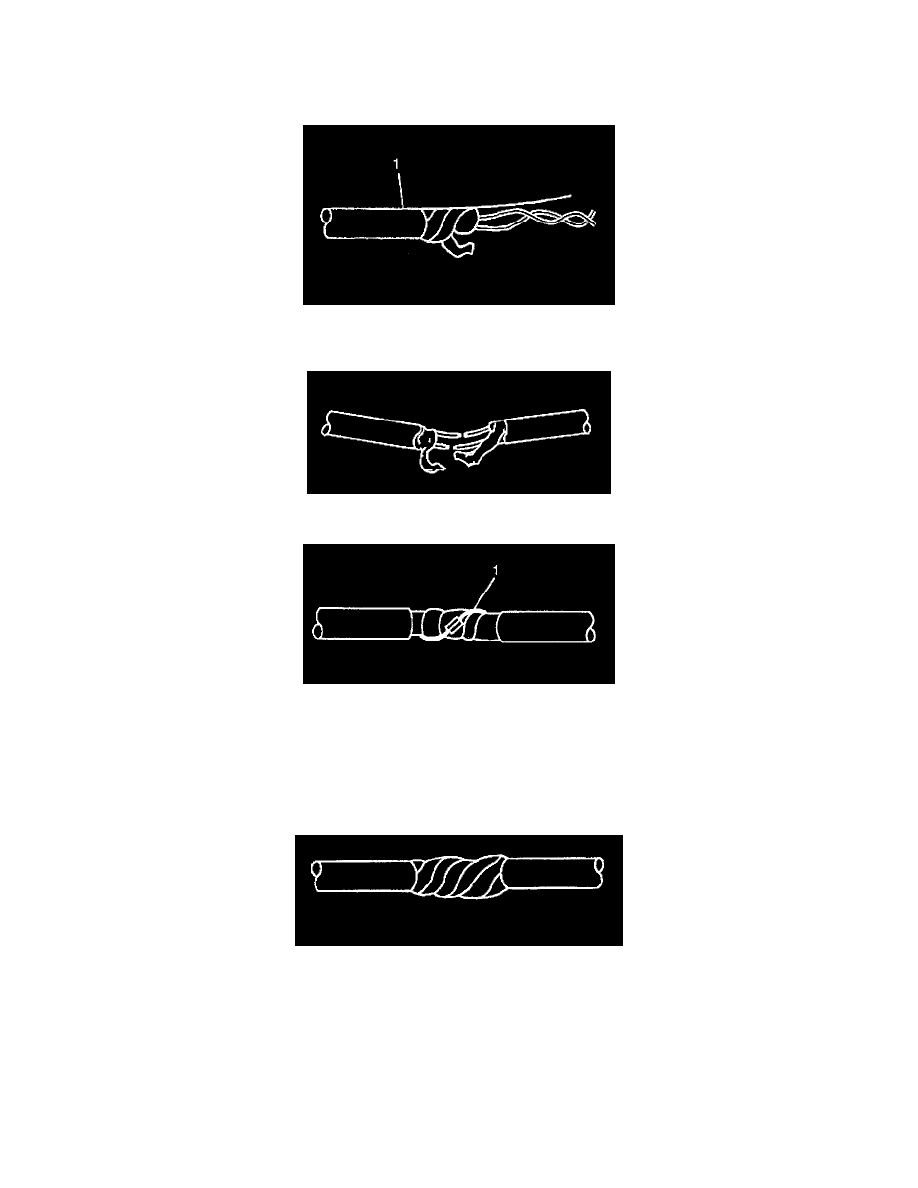Express 1/2 Ton Van V8-5.7L VIN R (1999)

Splicing Twisted or Shielded Cable
Twisted/shielded cable is used in order to protect wiring from electrical noise. Two-conductor cable of this construction is used between the radio and
the Delco-Bose (R) speaker/amplifier units and other applications where low level, sensitive signals must be carried. Follow the instructions below in
order to repair the twisted/shielded cable.
1. Remove the outer jacket (1). Use care not to cut into the drain wire of the mylar tape.
2. Unwrap the tape. Do not remove the tape. Use the tape in order to rewrap the twisted conductors after the splice is made.
3. Prepare the splice. Untwist the conductors and follow the splicing instructions for copper wire. Staggering the splices by 65 mm is recommended.
4. Re-assemble the cable.
^
Rewrap the conductors with the mylar tape.
^
Use caution not to wrap the drain wire in the tape (1).
^
Follow the splicing instructions for copper wire and splice the drain wire.
^
Wrap the drain wire around the conductors and tape with mylar tape.
IMPORTANT: Apply the mylar tape with the aluminum side inward. This ensures good electrical contact with the drain wire.
5. Tape over the entire cable. Use a winding motion when you apply the tape.
Splicing Inline Harness Diodes
Many vehicle electrical systems use a diode to isolate circuits and protect the components from voltage spikes. When installing a new diode use the
following procedure.
1. Open the harness.
^
If the harness is taped, remove the tape.
^
To avoid wiring insulation damage, use a sewing ripper in order to cut open the harness.
^
If the harness has a black plastic conduit, pull out the diode.
2. If the diode is taped to the harness, remove all of the tape.
